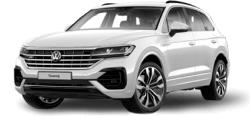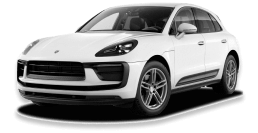If you spend a lot of time driving daily, you’re likely familiar with the unavoidable scenarios of letting your car idle: waiting at red lights, enduring bumper-to-bumper traffic, and more. However, excessive idling can have negative impacts on your European vehicle, whether it’s a Mercedes, Jaguar, or BMW.
In essence, idling occurs when your car’s engine runs while the vehicle remains stationary. Many people idle their cars in the morning to warm them up or while waiting to pick up their kids at school.
While idling might seem harmless, it can lead to several issues:
1. Wastes Gas:
Despite not pressing the gas pedal, idling consumes fuel. In just two minutes of idling in PARK, your car uses as much gas as it would driving one mile, equating to about one gallon per hour.
2. Accelerates Oil Consumption:
Idling also increases oil usage, potentially requiring more frequent oil changes. If your Check Oil light appears sooner than expected, excessive idling could be a contributing factor.
3. Increases Emissions:
Although modern cars are cleaner, idling emits harmful pollutants into the atmosphere, contributing to air pollution. Limiting idle time helps reduce these emissions.
4. Strains Your Battery:
Continuous idling prevents the battery from recharging properly, leading to premature wear and potential failure.
5. Decreases Vehicle Performance:
Prolonged idling stresses components like head gaskets and spark plugs, accelerating their wear and potentially leading to costly repairs.
To preserve your vehicle’s health and performance, minimize unnecessary idling. If you anticipate a longer stop, consider putting your car in park until you’re ready to drive again.
How to Avoid Excessive Idling
If you’re looking for ways to reduce the time your vehicle spends idling, here are a few practical tips:
- Turn off your engine when waiting: If you’re stopped for more than a minute (e.g., at a train crossing or traffic light), consider turning off your engine to save fuel and reduce wear on your car.
- Use remote start systems wisely: Some cars offer remote start systems that allow you to warm up your vehicle without idling for long periods. Just make sure you’re not leaving the engine running too long.
- Plan your routes: Try to avoid high-traffic areas where long periods of idling are common. This can help you save fuel and avoid unnecessary wear.
How Idling Affects Your Car’s Resale Value
Excessive idling doesn’t just damage your car’s internal systems, it can also lower its resale value. Potential buyers may be wary of cars with engine wear, higher mileage, or a history of frequent idling. Keeping your car running smoothly and minimizing idling can help protect its long-term value.
The Environmental Impact of Idling
Idling doesn’t only affect your car; it also impacts the environment. Every time your car idles, it contributes to air pollution, particularly in areas with heavy traffic. Reducing idle time can lower your carbon footprint and help keep the air cleaner for everyone.
The Impact of Idling on Specific Vehicle Types
While idling affects all cars, European vehicles like Mercedes, BMW, and Jaguar are engineered with advanced systems that set them apart from domestic models. These high-performance vehicles are designed with more sophisticated engine management systems and cooling technologies, meaning that prolonged idling can place unnecessary strain on critical engine components. This can reduce their efficiency and potentially shorten the lifespan of vital parts.
To minimize the impact of idling on your European vehicle:
- Advanced Engine Management: These systems require careful attention, as extended idling can lead to carbon buildup and inefficiency.
- Cooling Technologies: Prolonged idling may cause your cooling systems to work harder than necessary, potentially leading to overheating.
- Performance and Longevity: Reducing idle time helps maintain the car’s optimal performance and preserves the longevity of key components like the turbocharger and exhaust system.
For your high-performance European vehicle, minimizing idling is key to preserving both its performance and overall longevity.
Idling Myths: Busting Common Misconceptions
- Myth #1: “Idling uses less fuel than restarting the engine.”
Fact: Restarting your engine uses far less fuel than idling for long periods. - Myth #2: “Idling is necessary to warm up your car in the winter.”
Fact: Modern engines don’t require extensive idling. A brief idle is enough before driving. - Myth #3: “Idling won’t harm my car’s engine.”
Fact: Long idling can cause engine damage due to carbon buildup and faster wear on components.
When to Seek Professional Help
Excessive idling can cause a range of issues that may not be immediately obvious. If you notice any of the following signs, it’s time to consult a mechanic:
- Poor Engine Performance: Sluggish acceleration, rough idling, or misfires could indicate carbon buildup or ignition system issues, worsened by frequent idling.
- Reduced Fuel Efficiency: If your car starts using more fuel than usual, excessive idling could be the cause as it burns fuel without moving the car.
- Warning Lights: Dashboard lights like the check engine or oil change light could signal engine wear or fluid issues caused by idling.
- Overheating or Smoke: Extended idling may cause engine overheating, especially in vehicles with turbo systems, or lead to excessive exhaust smoke.
If you notice any of these signs, take your vehicle to a professional experienced with European cars. Early detection helps prevent costly repairs and keeps your car running smoothly.
Contact Hance’s European:
Experiencing issues due to idle time? Our expert technicians are here to help restore your car’s optimal performance. Don’t let problems worsen. Schedule a service appointment for your European vehicle today at Hance’s European!


 BMW
BMW Mercedes
Mercedes Jaguar
Jaguar Land Rover
Land Rover Volkswagen
Volkswagen Porsche
Porsche Audi
Audi